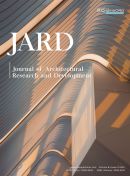Abstract
With urbanization and the rapid development of social economy, China’s rail transit industry has developed rapidly in recent years. In order to alleviate the pressure of road network, subways provide convenience as they are fast and space-saving. Subway stations are major energy consumers of urban power grid due to their large traffic volume and long operation time. On the premise of ensuring operation safety, reducing the energy consumption of subway helps in energy conservation and emission reduction as proposed in the 13th Five-Year Plan. According to the statistics of the energy-saving evaluation report of rail transit engineering, the lighting system accounts for 20%–30% of the total power consumption of the subway station. Due to the single lighting control mode of the lighting system in the subway station, the actual station illumination cannot be reported and adjusted in time, resulting in the waste of lighting energy and high power consumption of the system. Through in-depth research on the intelligent lighting system of subway station, this paper improves the system control, and finally summarizes the optimization scheme of subway station lighting design which can effectively save the power consumption of lighting system. The main contents of this paper are as follows: The research results of this paper can provide effective measures for energy saving of electric lighting in subway stations and reduce electric energy consumption; on the other hand, as an integral part of building lighting energy-saving system, it also has certain guiding significance for the research of building lighting energy-saving.
References
Deng Q, 2019, Research on the Development Trend of Urban Rail Transit Energy Saving Technology. Traffic World, 2019(Z1): 250–251.
Zou H, 2014, Design and Implementation of Urban Smart Lighting System in Tongzhou District, Beijing, dissertation, Tianjin University.
Yu X, 2007, Simulation and Research on Passenger Flow and Vehicle Flow in Urban Rail Transit, dissertation, Beijing Jiaotong University.
Tan B, Liu J, 2017, Design of Distributed Intelligent Lighting Control System Based on IEC 61499. Modern Electronic Technology, 40(22): 182–186.
Kim I-T, Jang I-H, Choi A-S, et al., 2015, Brightness Perception of White LED Lights with Different Correlated Color Temperatures. Indoor and Built Environment. 24(4): 500–513
Hou X, Duan Z, Ma B, 2014, Research on Intelligent Control of Artificial Light Environment in Urban Subway Stations. Industrial Control Compute, 27(05): 79–80 + 83.
Li C, 2012, Research on Thermal Environment Characteristics of Residential Areas Based on Planning Elements, dissertation, Anhui University of Architecture.
Zhao W, 2016, Research on Optimal Design of Sound and Light Environment in Commercial Building Atrium, dissertation, Wuhan University.
Yu W, 2018, Research on the Interactive Relationship Between the Spatial Structure of Villages in Severe Cold Regions and the Traffic Sound Environment, dissertation, China University of Mining.
Izadi T, Mehrabian MA, Ahmadi G, et al., 2021, Numerical Analysis of the Mirco-Particles Istribution Inside an Underground Subway System due to Train Piston Effect. J. Wind Eng. Ind. Aerod, 211: 104533.
Shakya KM, Saad A, Aharonian A, 2020, Commuter Exposure to Particulate Matter at Underground Subway Stations in Philadelphia, Build. Environ. 186: 107322.
Moreno T, Reche C, Minguillón MC, et al., 2017, The Effect of Ventilation Protocols on Airborne Particulate Matter in Subway Systems. Sci. Total Environ, 584-585: 1317–1323.
Kim K-H, Ho DX, Jeon J-S, et al., 2012, A Noticeable Shift in Particulate Matter Levels After Platform Screen Door Installation in a Korean Subway Station, Asian J. Atmos. Enviro 49: 219–223.
Chen T, Cao SJ, Wang J, et al., 2021, Influences of Optimized Air Curt at Subway Entrance to Reduce the Ingress of Outdoor Airborne Particles. Energ. Buildings, 244: 111028.
Park S, Kim M, Kim M, et al., 2018, Predicting PM10 Concentration in Seoul Metropolitan Subway Stations Using Artificial Neural Network (ANN), J. Hazard. Mater. 341: 75–82.
Lee S, Hwangbo S, Kim JT, et al., Gain Scheduling-Based Ventilation Control with Varying Periodic Indoor Air Quality (IAQ) Dynamics for Healthy IAQ and Energy Savings. Energ, Buildings 153: 275–286.
Kim MJ, Sankara Rao B, Kang OY, et al., 2017, Monitoring and Prediction of Indoor Air Quality (IAQ) in Subway or Metro Systems Using Season Dependent Models, Energ, Buildings 46: 48–55.
Wang J, Huang J, Feng Z, et al., 2021, Occupant-density-detection based energy effificient ventilation system: Prevention of infection transmission, Energ. Buildings 240: 110883.
Peng J, Kimmig A, Wang J, et al., 2021, Dual-Stage Attention Based Long-Short-Term Memory Neural Networks for Energy Demand Prediction, Energ. Buildings 249: 111211.
